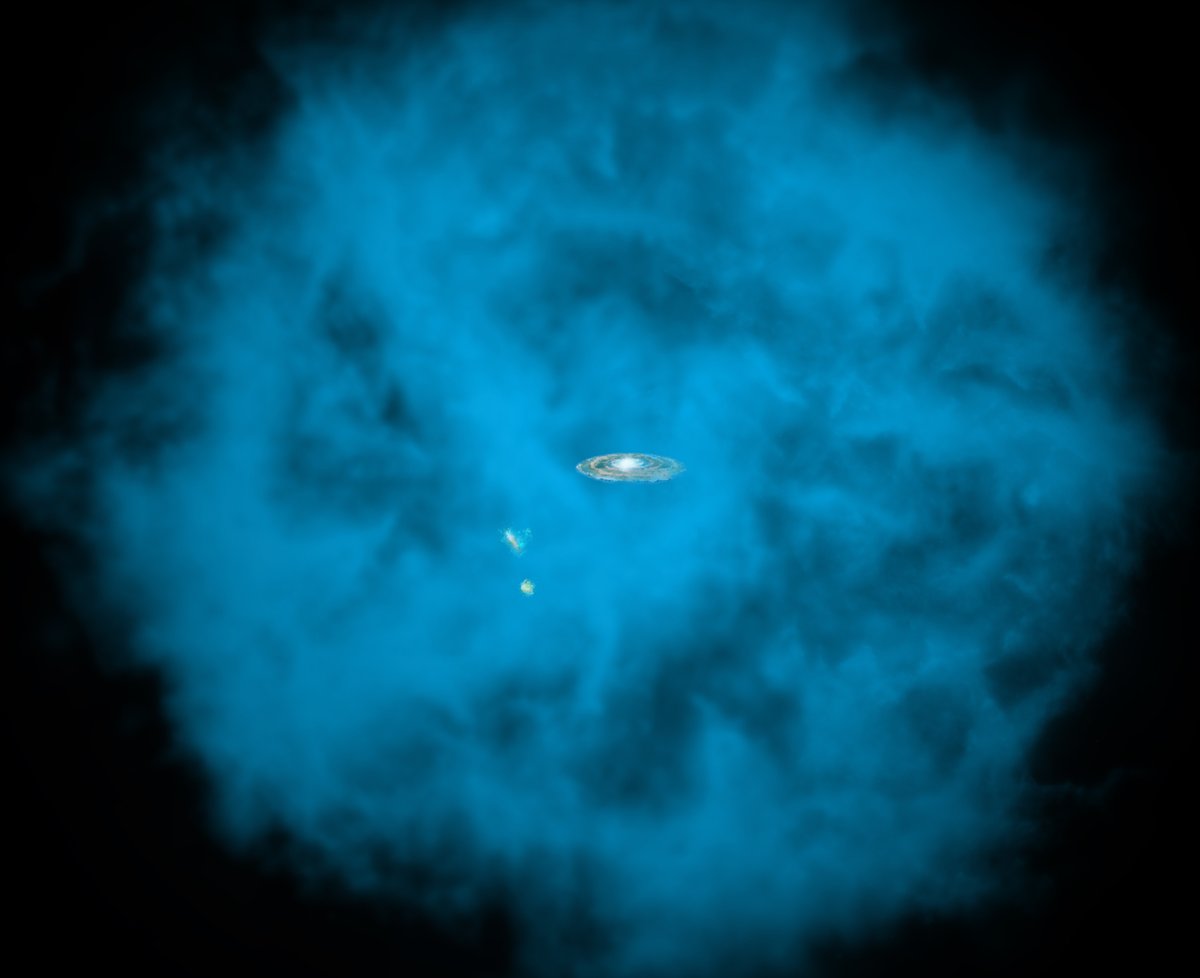
Erika
@ExploreCosmos_
-Once a starry-eyed girl, now exploring beyond. -Planetary scientist studying the orbital evolution of gas giant planets. -High-altitude climber. #MTB 🚴♀️
Moon Europa. Image taken by #NASAJuno and processed by myself. #Europa #Jupiter #News #Astronomy #Science #NASA #Photography 🐘 mstdn.social/@GirlInSpace

Earth is spinning just a bit faster this summer, making July 22, 2025, the second-shortest day on record. Today, Earth will complete its rotation about 1.34 milliseconds faster than the standard 24 hours. While imperceptible in everyday life, this is part of an unusual…
Hydrogen halos, also known as the circumgalactic medium (CGM), are vast, faint envelopes of hydrogen gas that surround galaxies, stretching far beyond their visible stars and disks. Think of them as a kind of "cosmic cocoon" or "atmosphere" enveloping galaxies. These halos are…


When you touch something, a table, your phone, another person, it feels like there's direct contact. But at the atomic level, that sensation is an illusion. In reality, atoms never truly touch each other. The electrons that surround the atoms in your skin and the electrons in the…
At the center of the Lagoon Nebula, 4,000 light-years away, the massive star Herschel 36 is emerging from its birth cloud, releasing intense radiation and powerful stellar winds that carve dramatic structures in the surrounding gas and dust. In visible light, the region appears…
Time is not the steady, universal tick-tock we once believed it to be. According to Einstein, time is woven into the very fabric of the universe, spacetime, and it flexes depending on how fast you move or how close you are to a massive object. This idea, first introduced in his…
The LST‑1, the prototype of the Cherenkov Telescope Array (CTA) located at the Roque de los Muchachos Observatory in La Palma, has revealed key new insights into gamma-ray bursts (GRBs) by observing the exceptionally bright GRB 221009A, nicknamed the “BOAT” (Brightest Of All…

Astronomers have, for the first time, imaged a long-predicted companion star orbiting Betelgeuse, a red supergiant in Orion. This smaller star, provisionally named Siwarha (Arabic for “Her Bracelet”), was detected using speckle imaging with the Alopeke instrument on Gemini North,…

We have long been puzzled by the unusual distribution of frozen hydrogen peroxide (H₂O₂) on Jupiter’s icy moon Europa. Traditional lab studies predicted higher concentrations near the moon’s cold polar regions, yet recent #JWST observations painted a conflicting picture,…

Astronomers have uncovered a remarkable cosmic oddity: a long-period radio transient (LPT) designated CHIME J1634+44, nicknamed the ‘unicorn’ for its singular characteristics. Detected via an international array of telescopes, including CHIME, the Green Bank Telescope, the Very…

Astronomers studying the distant universe with the #JWST have uncovered “little red dots” (LRDs), compact, crimson-tinted galaxies dating from just 600 million to 1.6 billion years after the Big Bang. These intriguing objects are extremely small, just a few hundred light‑years…

For over 400 years, ever since Galileo first observed sunspots, we have wondered how these cooler, dark patches could persist on the Sun’s roiling surface for days or even months. A new study has finally resolved this mystery. An international team refined a method originally…

Astronomers have, for the first time, observed a young star surrounded by gas and dust where a new solar system appears to be forming. Using the @almaobs, they detected a stream of material flowing from a large outer disk into an inner disk around the star, supplying the raw…

A newly discovered trans‑Neptunian object, nicknamed Ammonite, measuring roughly 380 km across has been identified far out in our solar system. Its size places it in the meso‑dwarf planet category. This object stands out not only for its dimensions but also for its…

A new theoretical model suggests that the combination of gravity and quantum fluctuations alone may explain the origin of structure in the early universe, potentially eliminating the need for an inflaton field. This minimalist approach proposes that the interaction between…

Researchers have recently recreated conditions similar to those just after the Big Bang by smashing atomic nuclei at near-light speed in powerful colliders like the LHC and RHIC, generating temperatures over a thousand times hotter than the Sun’s core. These extreme collisions…

Astronomers have discovered a rare trans-Neptunian object named 2020 VN₄₀ that orbits the Sun in a unique 10:1 resonance with Neptune, meaning it completes one orbit for every ten made by Neptune. What makes this object particularly unusual is its highly tilted and elongated…

A new U.K.-led mission called MESOM (Moon‑Enabled Sun Occultation Mission) aims to generate artificial solar eclipses in space using a small satellite aligned with the Moon’s shadow, creating eclipse conditions roughly once every 29.6 days. By drifting through the Moon’s umbra,…
